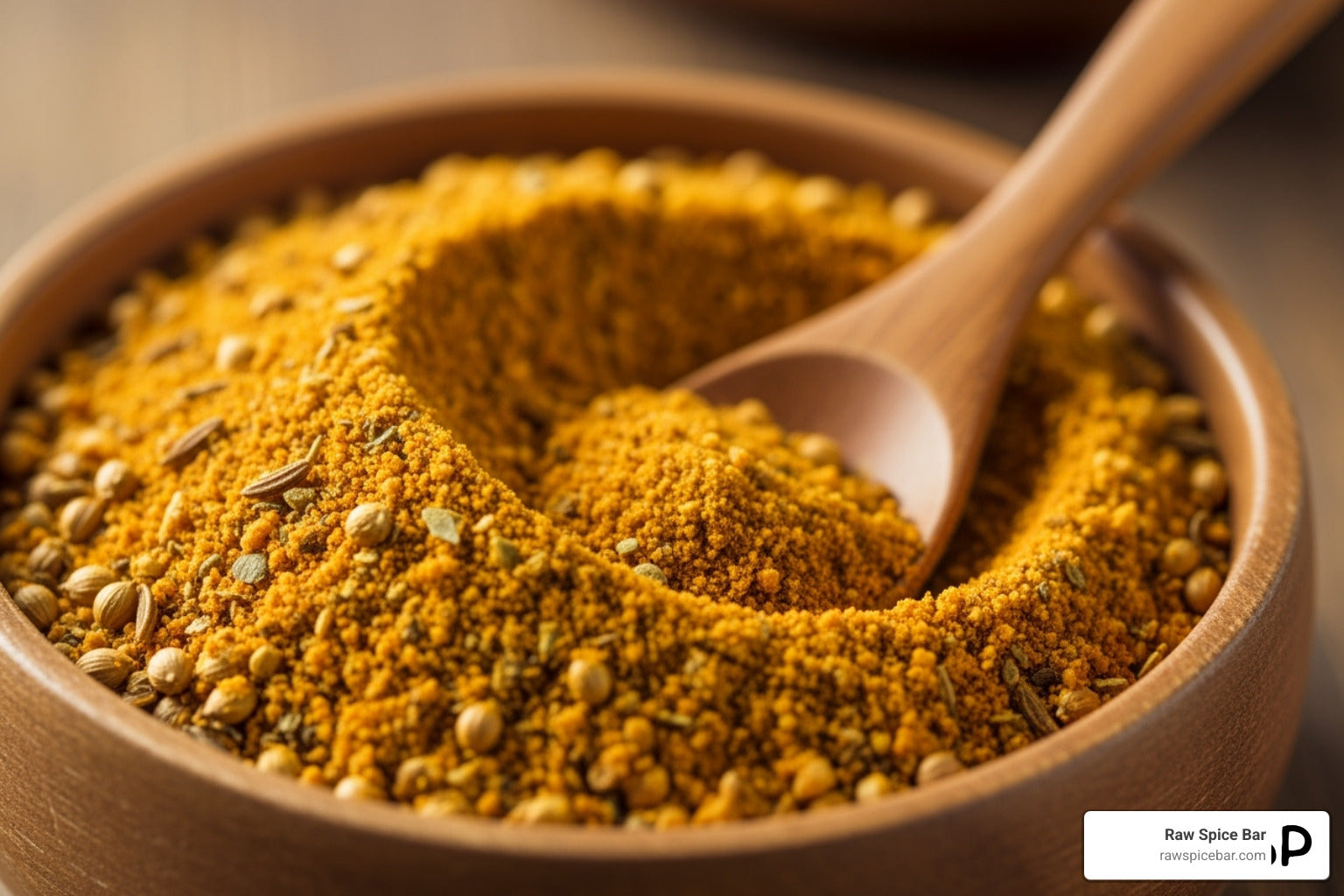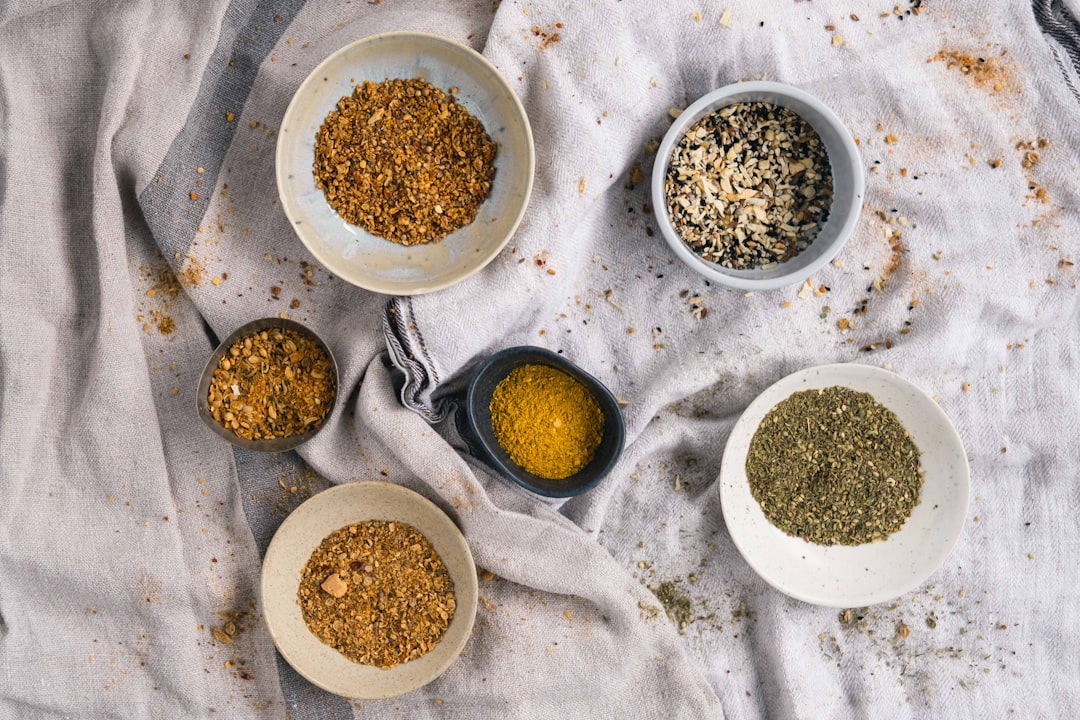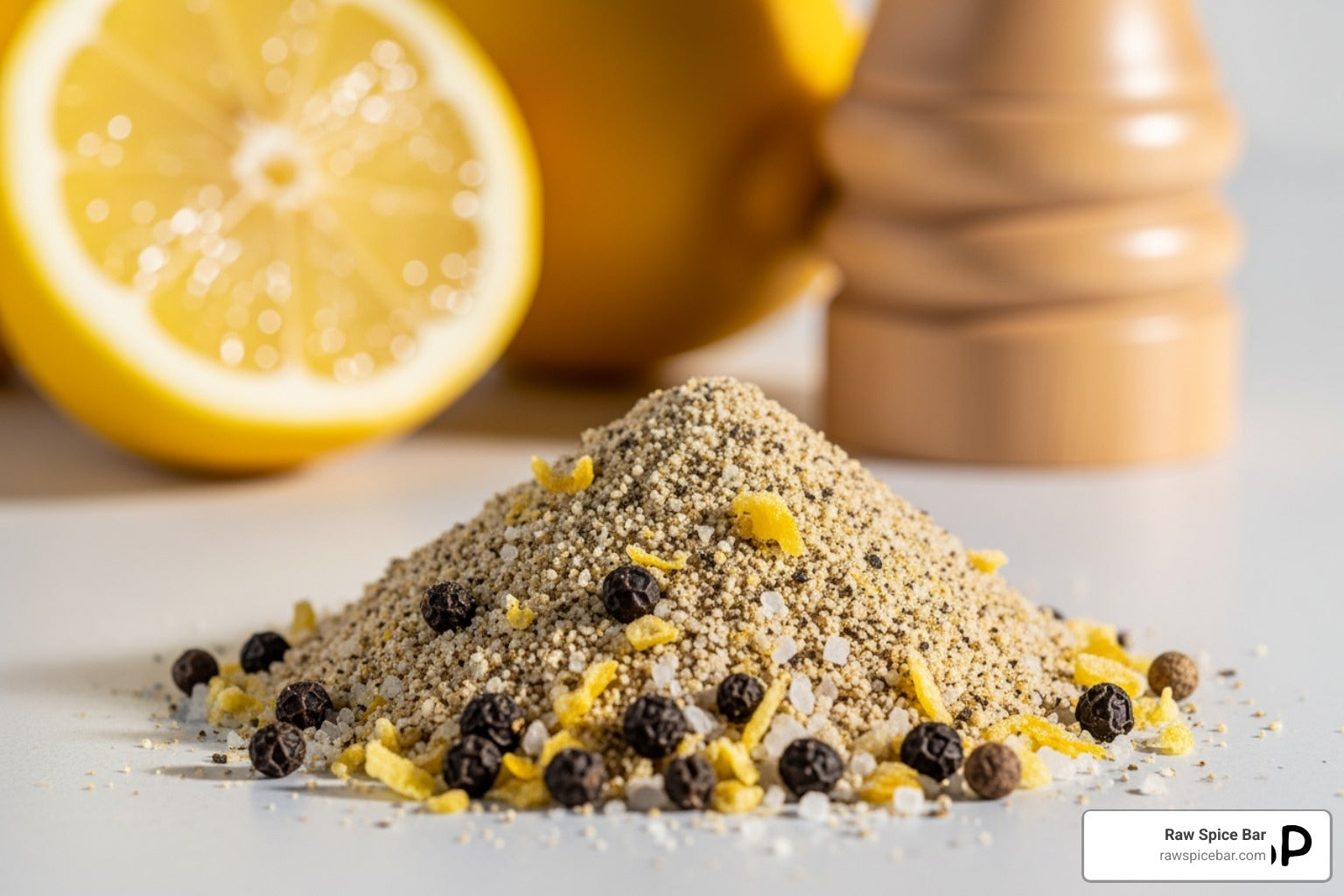Introduction: The Natural Pharmacy in Your Pantry
Are you curious about natural ways to boost your health? Herbs for healing offer a time-tested path. Many people use them to support their well-being.
Here’s a quick look at what healing herbs are and why they matter:
- What they are: Healing herbs, also called medicinal plants, are collected from nature or grown on purpose. They're used for many health benefits.
- Why they matter: They can help with various issues, from reducing stress and pain to soothing upset stomachs and fighting off colds.
For thousands of years, people have turned to plants for health. In fact, even today, herbal healing is the main medicine for up to 80 percent of the world's population. Many modern drugs even started from plants.
I'm Joseph Rosenblatt, and my journey as a food industry entrepreneur has given me deep insights into the power of natural ingredients, including the vast potential of herbs for healing. With a passion for crafting global spice blends, I've seen how these natural treasures can transform both dishes and well-being, bringing ancient wisdom to modern kitchens.
This guide will explore how these incredible plants can be a powerful part of your health journey.
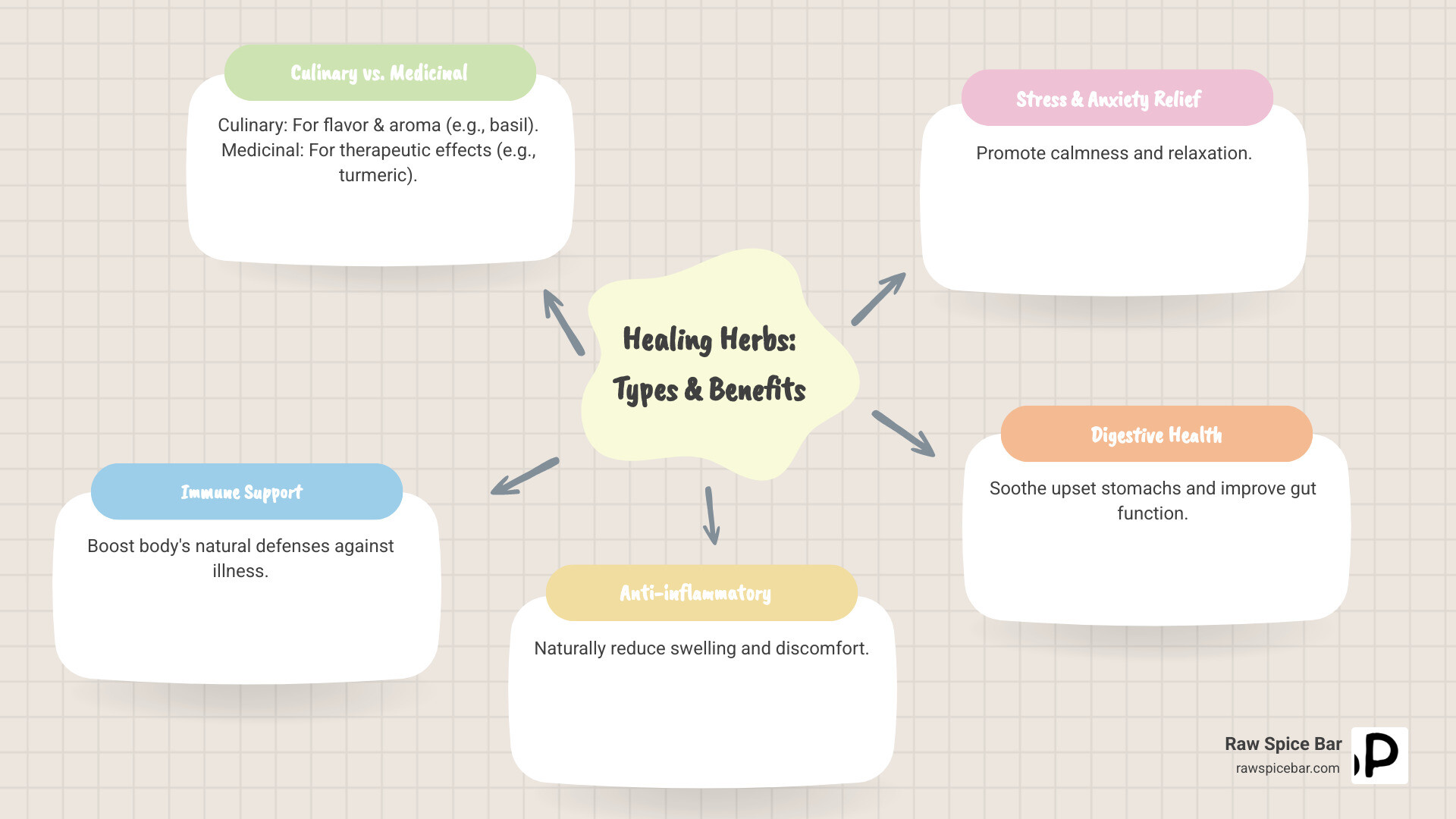
Easy herbs for healing glossary:
The Ancient Roots and Modern Relevance of Medicinal Plants
Think about it: our journey as humans has always been deeply connected to plants. Long before modern pharmacies dotted every street corner, our ancestors relied on the earth's incredible bounty – herbs for healing. This isn't just a dusty old history lesson; it's a vibrant, living tradition that continues to thrive globally, from the busy markets of India to the peaceful temples of Japan, and from the colorful landscapes of Morocco to diverse cultures across the United States and Africa.
The story of medicinal plants is truly ancient and powerful. For thousands of years, using herbs for healing was simply how people stayed well. Ancient civilizations like the Egyptians and Greeks carefully documented their uses, sharing knowledge that has lasted centuries. And sophisticated health systems like Traditional Chinese Medicine (TCM) and India's Ayurveda developed comprehensive ways of using herbs, building entire philosophies around them. In fact, people in Asia were especially good at writing down their findings, carefully recording how different plants could help. Even today, herbal healing is the main medicine for up to 80 percent of the world's population, showing just how powerful and accessible these natural remedies truly are.
What's really fascinating is how these ancient traditions connect with modern science. Many of the pharmaceutical drugs we use today actually owe their origins to plants! At the start of the 21st century, a remarkable 11 percent of the 252 drugs considered "basic and essential" by the World Health Organization were "exclusively of flowering plant origin." This includes well-known medications like codeine, quinine, and morphine – all containing ingredients that came from plants. You can dive deeper into the scientific research on plant-derived drugs here. This connection clearly shows that while our methods have changed, nature's fundamental healing power remains undeniable. Science is increasingly catching up, confirming what billions of people have known for centuries through their own experiences.
Beyond their specific uses, herbs for healing offer general health benefits that support your overall well-being. Many are packed with antioxidants, which are like tiny bodyguards protecting your cells from damage. They often have strong anti-inflammatory properties, which can help calm discomfort and support your body's natural balance. Plus, many herbs are known for their ability to support and boost your immune system, helping your body fight off illnesses and adapt to everyday stress. They can also provide essential nutrients that modern diets might sometimes miss. Adding these natural powerhouses to your life can be a simple, yet profound, step towards a healthier, more balanced you.
A Guide to Common Herbs for Healing and Their Uses
Now that we've glimpsed the rich history and broad benefits of medicinal plants, let's dive into some specific herbs for healing that are widely recognized for their therapeutic properties. These are herbs that have garnered both traditional acclaim and, in many cases, modern scientific backing. We'll explore how you can incorporate them into your wellness routine, whether through culinary delights or focused remedies.
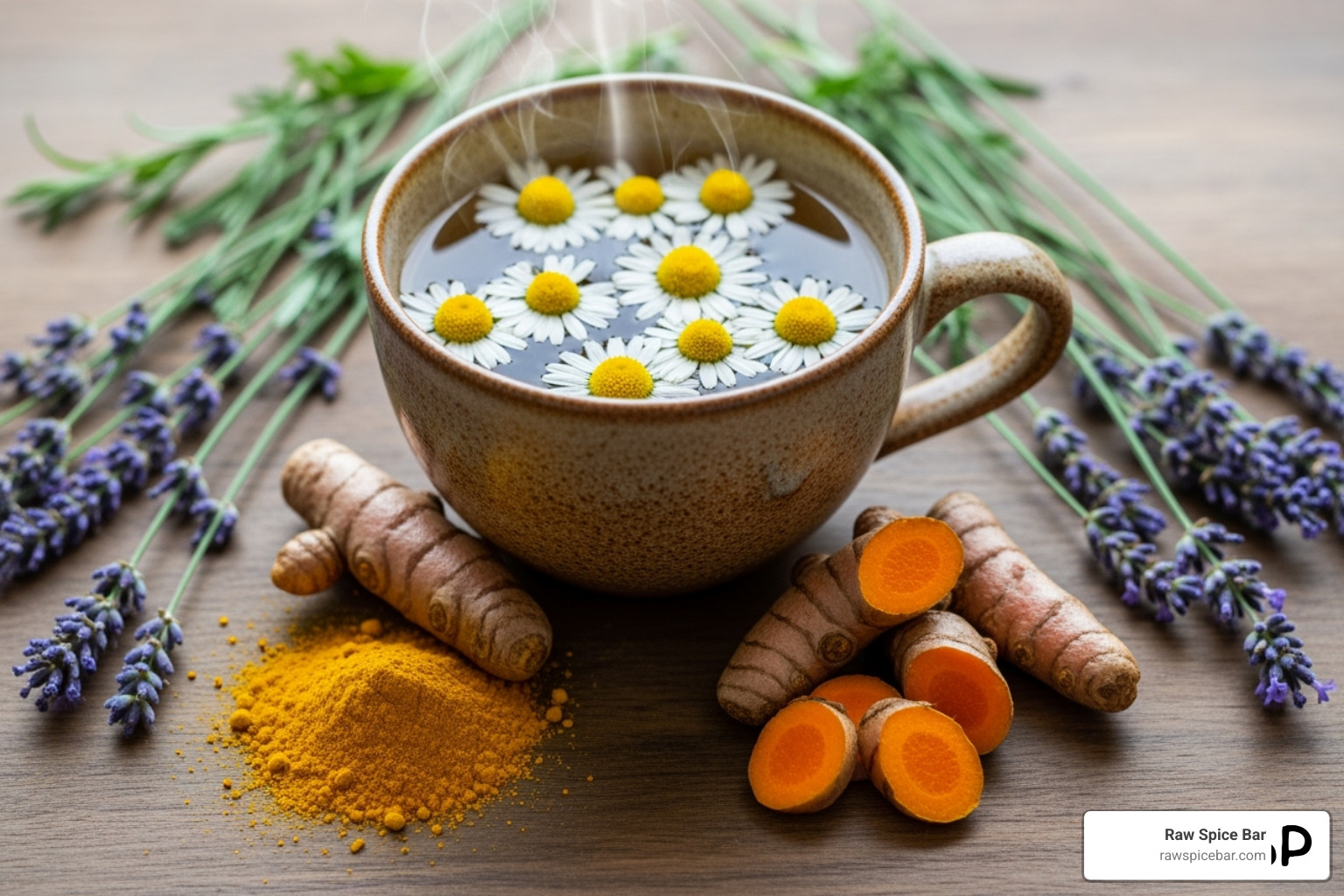
Turmeric (Curcuma longa)
Often called the "golden spice" due to its vibrant hue, turmeric is a superstar in herbs for healing. Native to Southeast Asia, it's a cornerstone of Ayurvedic medicine in India, where it has been used for over 4,000 years for various ailments, from upper respiratory infections to digestive issues and skin problems.
The key to turmeric's power lies in its active compound, curcumin. This compound is renowned for its potent anti-inflammatory and antioxidant properties. Research suggests that turmeric can be beneficial for joint health, with studies showing its potential for relieving discomfort associated with arthritis. It's also increasingly recognized for its role in supporting skin health and even dermatologic diseases.
We love turmeric not just for its healing properties but also for its versatility in the kitchen. It's an essential ingredient in many of our global spice blends, adding warmth and depth of flavor. To improve curcumin's absorption, we always recommend consuming turmeric with a pinch of black pepper, as the piperine in pepper significantly boosts its bioavailability. You can stir it into curries, soups, or even make a soothing "golden milk" by blending turmeric powder with warm milk and a touch of honey – a perfect bedtime ritual.
Chamomile (Matricaria recutita)
Ah, chamomile – the gentle giant of herbs for healing. This delicate flower is a universal symbol of calm and comfort. Globally, over 1 million cups of chamomile tea are consumed per day, making it one of the most popular herbal beverages.
Chamomile is primarily celebrated for its calming properties. It's an excellent natural remedy for anxiety relief and acts as a gentle sleep aid, helping to quiet the mind and prepare the body for rest. Beyond its soothing effects on the nervous system, chamomile is also a fantastic digestive soother, easing upset stomachs and promoting gut comfort. A 2016 review highlighted chamomile as a versatile herb, and studies have shown it to be superior to a placebo when treating generalized anxiety disorder. It can also be used for wound healing and reducing inflammation, even applied topically for skin rashes or to ease nausea.
Whether you choose German chamomile (an annual that thrives in the Midwest) or Roman chamomile (a perennial that attracts pollinators and smells like apples), brewing a simple chamomile tea by steeping dried flowers in hot water is a wonderful way to unwind after a long day or settle a restless stomach.
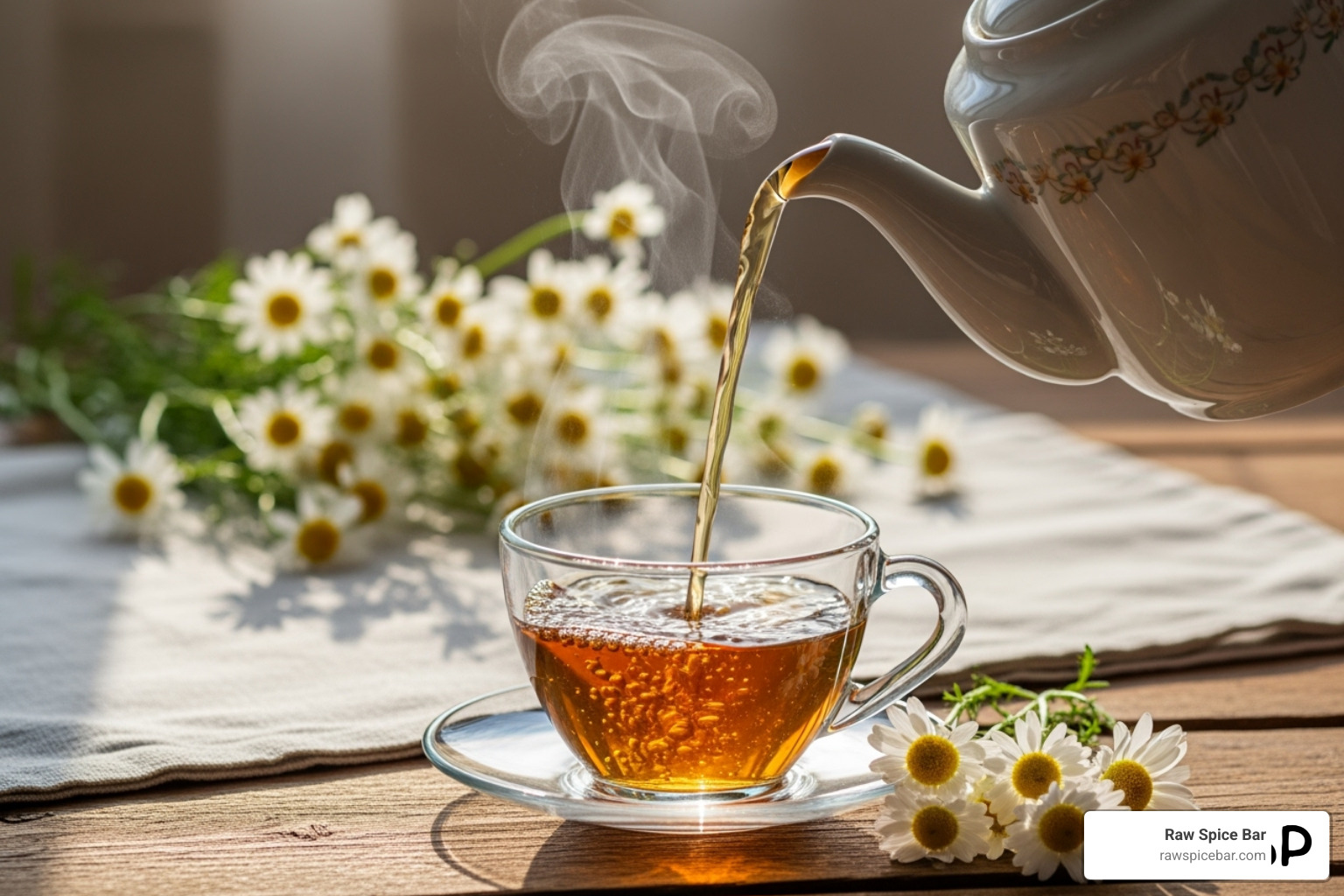
Echinacea (Echinacea purpurea)
When it comes to immune system support, echinacea often takes center stage among herbs for healing. Native Americans were among the earliest people to use echinacea, with archaeological evidence dating back to the 18th century. It's best known as a go-to remedy for the common cold and flu, with many people using it to shorten the duration and severity of symptoms.
Echinacea works by stimulating the body's immune defenses, helping it fight off viruses and bacteria. While studies on its effectiveness for colds have yielded mixed results, many users swear by its ability to provide antiviral, antibacterial, and anti-fungal support. It's available in various forms, including teas, tinctures, and capsules, making it easy to incorporate into your routine when you feel a sniffle coming on. However, it's generally advised for short-term use (less than eight weeks) to avoid potential immune system effects with prolonged consumption.
Lavender (Lavandula angustifolia)
More than just a pretty scent, lavender is a powerful ally in the field of herbs for healing, particularly for emotional and mental well-being. First brought to Provence, France, by the Romans 2,000 years ago, it has become an aromatherapy staple worldwide.
Its distinctive aroma has profound effects on our nervous system. Lavender is widely used for stress and anxiety reduction, acting as a natural sedative that promotes relaxation and improves sleep quality. Studies have shown its direct impact on mood and cognitive performance, making it a valuable tool for calming the mind. Beyond its aromatic benefits, lavender also possesses anti-inflammatory properties and can be used topically for skin irritations.
We often enjoy lavender in essential oil diffusers for a calming atmosphere or added to bath salts for a relaxing soak. For topical applications, it's crucial to dilute lavender essential oil in a carrier oil (like jojoba or almond oil) before applying it to the skin. While some culinary uses exist, especially in Mediterranean cuisine, we advise caution with ingesting essential oils and recommend consulting an expert.
Ginkgo (Ginkgo biloba)
The ginkgo tree is a true marvel – a "living fossil" with a lineage dating back 270 million years. Its leaves yield potent extracts that have made it a prominent figure in the category of herbs for healing, especially concerning brain health.
Ginkgo is primarily known for its ability to support cognitive function. It's been studied for its potential in treating mild to moderate dementia and slowing cognitive decline in Alzheimer's disease. By improving circulation, particularly to the brain, ginkgo may improve memory, focus, and overall mental clarity.
While the leaf extract is beneficial, it's crucial to note a significant caution: ginkgo seeds contain a toxin that can cause seizures and, in large amounts, can be fatal. Therefore, only extracts from the leaves should be used. As with any potent herb, especially one affecting circulation or cognitive function, it's wise to discuss its use with a healthcare professional, particularly if you are on other medications, as ginkgo can interact with NSAIDs, anticoagulants, and certain antidepressants.
How to Use Healing Herbs Safely and Effectively
Embracing herbs for healing is an exciting step on your wellness journey! But just like anything powerful, using them wisely is key. Think of it like cooking: you wouldn't just throw ingredients together without a recipe, right? The same goes for herbs. Knowing how to prepare them correctly and understanding the right amount to use can open up their full benefits safely. Let's explore the many ways these natural wonders can be prepared, and what you need to keep in mind to use them well.
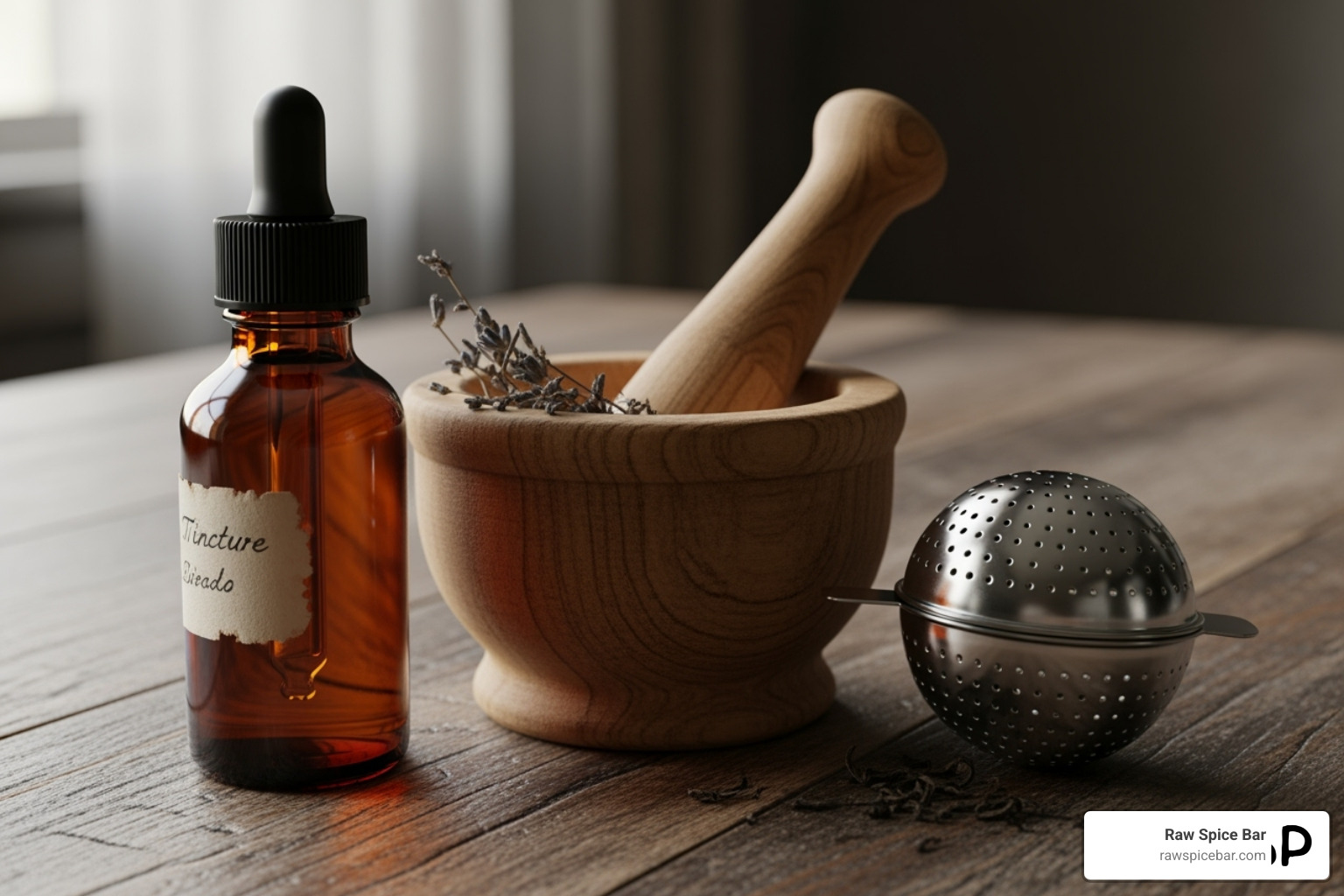
Common Herbal Preparations
Herbs come in many forms, and each way of preparing them has its own special purpose.
One of the simplest ways to enjoy herbs for healing is through teas and infusions. This is probably what first comes to mind! You simply steep softer plant parts like leaves and flowers in hot water. Imagine a warm cup of chamomile tea to help you drift off to sleep, or a refreshing mint tea to soothe an upset tummy. This method is wonderful for gentle, everyday support.
For something a bit more concentrated, we have tinctures. These are liquid extracts, often made by soaking herbs in alcohol for several weeks. This process pulls out the plant's active compounds, making them quite potent. Tinctures are usually taken by the drop, making them super convenient for on-the-go use and they often last a long time.
If you prefer a consistent dose without the taste of herbs, capsules and powders are a great choice. Here, dried herbs are ground up and placed into capsules. You'll often find popular herbs for healing like turmeric or ashwagandha in this easy-to-take form, perfect for daily supplementation.
Sometimes, your skin needs a little herbal love! That's where salves and poultices come in. Salves are like herbal ointments, made by infusing herbs into oils (think olive or coconut oil) and then solidifying them with beeswax. They're fantastic for soothing skin irritations, minor scrapes, or even sore muscles. Poultices are made by crushing fresh or dried herbs, moistening them, and applying them directly to the skin. We've seen how well herbs like AllHeal (Prunella vulgaris) can be used in poultices to help with skin repair and clean minor wounds.
Finally, we have essential oils for aromatherapy. These are highly concentrated plant extracts used for their amazing scents and therapeutic benefits. You might diffuse lavender oil to create a calming atmosphere or use peppermint oil to feel more energized. Just remember, these oils are very potent. They are generally not safe to take by mouth unless a qualified expert specifically tells you to, and always dilute them with a carrier oil before putting them on your skin.
Choosing the right preparation really depends on what you need. A calming tea might be perfect for internal relaxation, while a salve or poultice would be better for a skin issue.
Safe Practices for Using Herbs for Healing
While it's true that herbs for healing come from nature, it’s important to remember that "natural" doesn't always mean "safe" for everyone, or in every situation. They are powerful tools, and we should treat them with respect and a healthy dose of caution.
Our golden rule is this: Always consult a healthcare professional before starting any new herbal treatment. This is especially true if you have existing health conditions, are pregnant or breastfeeding, or are thinking about giving herbs to children or infants (as their safety often isn't tested for these groups). Your doctor, a registered dietitian nutritionist (RDN), or a qualified herbalist can offer personalized advice.
Just like regular medicines, herbs can have side effects. For example, St. John's Wort, which is sometimes used for mild depression, can make your skin more sensitive to the sun. Or, garlic, while great for your heart, can increase your risk of bleeding. It's smart to know what to watch out for.
One of the most crucial things to understand is the risk of drug interactions. Many herbs for healing can mix dangerously with prescription medications. For instance, herbs like garlic, chamomile, ginseng, and turmeric can increase your risk of bleeding if you're also taking blood thinners. St. John's Wort is known to interact seriously with antidepressants, which could lead to a dangerous condition called serotonin syndrome. And ginseng can affect blood sugar levels, which is vital information if you have diabetes and are on medication. Always, always tell all your healthcare providers about every health approach, supplement, and medicine you use. This helps them ensure your care is coordinated and safe.
Lastly, pay attention to dosage and duration. More isn't always better! Taking more than the recommended amount of an herb can lead to unwanted side effects. Some herbs, like echinacea, are actually best used for shorter periods rather than continuously. Always follow the guidelines carefully.
What Consumers Should Know About Quality
Navigating herbal supplements can sometimes feel a bit like the wild west, especially in places like the United States. Here, the Food and Drug Administration (FDA) sees herbal supplements more like food than medicine. This means they don't have the same strict testing, manufacturing, and labeling rules that prescription drugs do. You also won't see herbal supplement labels claiming to "treat" specific health conditions; instead, they might say something like "improves mood" rather than "treats depression."
Because of this, not all supplements are created equal, and the quality can really differ from one brand to another.
This is why the importance of sourcing from reputable brands cannot be stressed enough. Look for companies that are open about where their herbs come from, how they're made, and how they check for quality.
Some companies might use fillers or have contaminants in their products to cut costs. This can mean you're getting less of the good stuff, or even taking in unwanted chemicals like pesticides or heavy metals. Nobody wants that!
To be sure you're getting a quality product, look for third-party testing and standardization. This means an independent group has tested the product to make sure it contains what it says it does, is free from harmful stuff, and meets high quality standards. Look for certifications from groups like USP, NSF International, or ConsumerLab.com. Some good brands also "standardize" their extracts, meaning they ensure a consistent amount of the active compounds in each dose.
Choosing organic and wildcrafted herbs (which are ethically harvested from their natural environment) can give you even more confidence in purity and potency. This also helps reduce your exposure to pesticides and supports sustainable practices.
Taking the time to research the company behind your herbs for healing is truly worth it. Check for clear labels, contact information, and proof of third-party testing. Your health is precious, and you deserve the best!
Cultivating Your Own Apothecary: A Beginner's Guide
There's something incredibly empowering about growing your own food and medicine. When it comes to herbs for healing, cultivating your own apothecary offers a unique blend of benefits: freshness, potency, and a profound connection to nature. We find immense joy in nurturing these plants from seed to harvest, knowing exactly what goes into them (and what doesn't!).
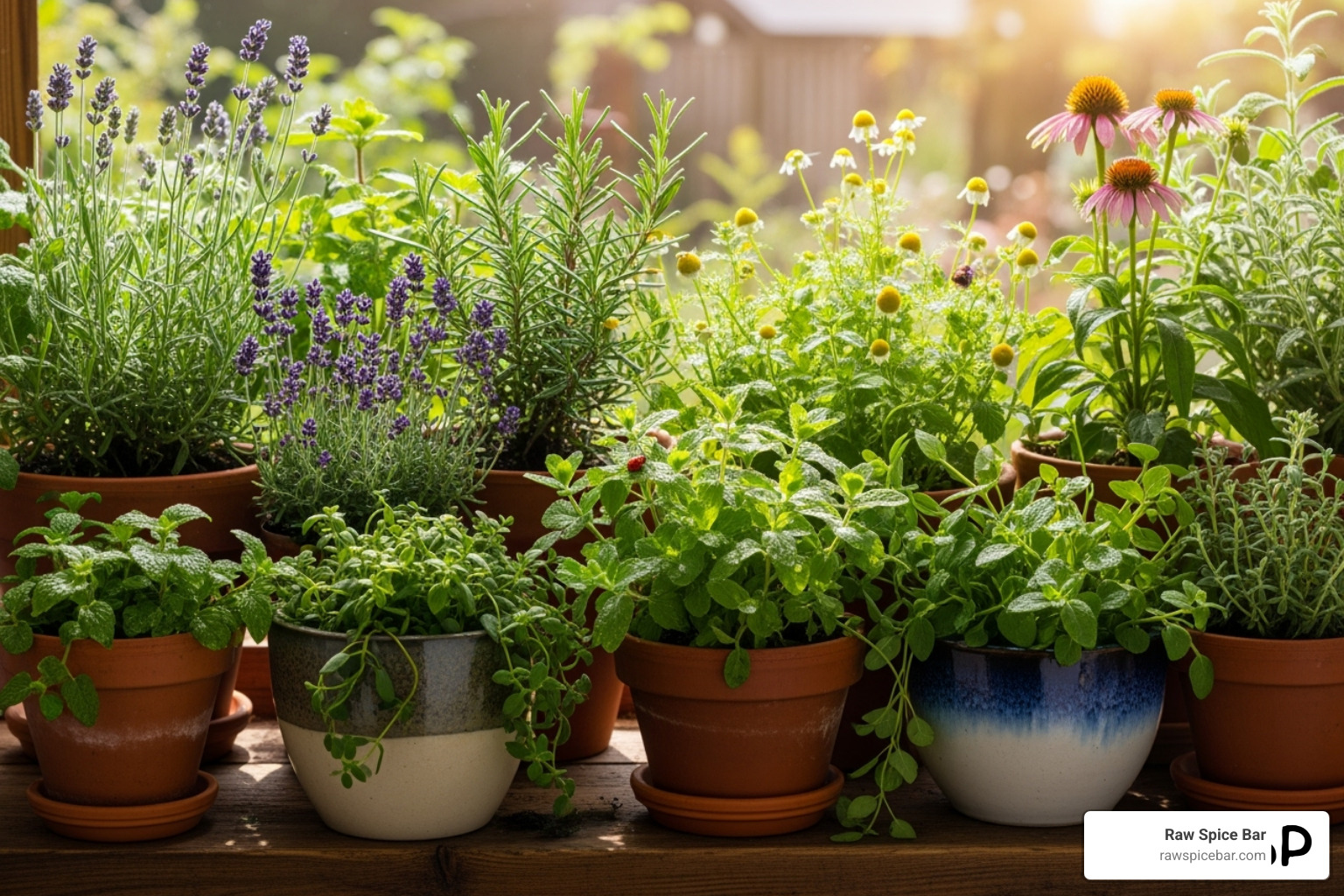
Imagine stepping into your garden, or even onto your windowsill, and picking fresh herbs that can help you feel better. That’s the beauty of growing your own. First, you get amazing freshness and potency. Herbs harvested right from your garden are at their very best, packed with powerful natural compounds. This is often much better than dried herbs that have sat on a shelf for a while.
Second, it’s surprisingly cost-effective. While you might spend a little at first on seeds or starter plants, growing your own herbs saves you money in the long run. You won't need to keep buying dried herbs or supplements. Plus, you have total quality control. By growing organically, you can be sure your herbs for healing are free from pesticides and other harmful chemicals.
Finally, there’s a wonderful connection to nature. Gardening itself is a calming activity. It helps reduce stress, offers gentle exercise, and builds a deeper appreciation for the natural world. There’s a special feeling of satisfaction knowing you can rely on yourself for natural remedies. For some widely used medicinal plants, growing your own can even help protect wild populations, supporting a more sustainable approach.
Starting Your Own Garden of Herbs for Healing
You don't need a huge yard to start a medicinal herb garden. Even a sunny windowsill or a small patio can be home to a thriving collection of herbs for healing. It’s easier than you might think!
Here are some fantastic, easy-to-grow medicinal herbs that are perfect for beginners. Many of these are also great for cooking, adding delicious flavor to your meals:
- Peppermint is wonderful for digestion, soothing upset stomachs, and helping with headaches. Just remember, it’s quite vigorous, so it’s best grown in a pot to keep it from spreading too much.
- Lemon Balm is a delightful, lemon-scented herb known for easing stress, calming anxiety, and helping you sleep better. It also makes a lovely, soothing tea.
- Calendula, also called pot marigold, has vibrant orange flowers that are incredibly healing for the skin. You can use it in salves for burns, wounds, rashes, and to soothe skin irritations.
- Rosemary is more than just a kitchen staple. It can help improve memory and focus, and it has anti-inflammatory and antioxidant benefits too.
- Basil (especially Holy Basil or Tulsi) not only tastes great in Italian and Asian dishes but can also help calm an upset stomach and act as a mild sedative.
- Thyme is a strong antiseptic and expectorant, making it great for coughs, colds, and sore throats. It’s also a fantastic herb for cooking.
- Oregano is another culinary powerhouse with strong properties that support your immune system.
- Yarrow is a traditional wound-healing herb, known for its ability to help stop bleeding and reduce swelling.
Most herbs for healing are pretty low-maintenance. They generally love sunlight, needing at least 6 hours of direct sun each day. They also need consistent water, but make sure the soil dries out a bit between waterings to prevent root rot. Good soil that drains well is also key. A good quality potting mix works wonders for containers, or you can improve your garden soil.
If you have limited space, container gardening is your best friend! Choose pots with drainage holes, and try to group herbs that like similar amounts of light and water. This way, you can easily move your plants to catch more sun or bring them inside when it gets cold.
When it comes to harvesting and drying your herbs, the best time to pick leaves and flowers for medicinal use is usually in the morning after the dew has dried. This is when their beneficial oils are strongest. For leaves, snip off the top few inches of growth. For flowers, pick them when they are fully open.
To dry them, tie small bundles of herbs and hang them upside down in a warm, dry, well-ventilated spot away from direct sunlight. Once they are completely dry (they should be brittle and crumble easily), store them in airtight containers in a cool, dark place. Drying and storing them properly will keep their power strong for months. This ensures you’ll always have your own supply of herbs for healing ready when you need them.
Conclusion: Accept the Healing Power of Nature
What an amazing journey we've been on! Our exploration into herbs for healing truly shows us a powerful truth: Mother Nature has always been, and still is, our very own pharmacy. Think of the ancient wisdom from Ayurvedic practices in India or the detailed records of Traditional Chinese Medicine. These traditions, along with everyday remedies passed down through families, prove how important medicinal plants have been for human health, all around the world.
We've finded just how many wonderful things these natural helpers can do. From turmeric's strong ability to fight inflammation to chamomile's gentle effect for calm, echinacea's boost for your immune system, lavender's soothing scent, and ginkgo's support for a sharp mind – each one offers unique benefits. But we also learned something super important: using these herbs for healing means doing so safely and smartly. That means knowing how to prepare them, understanding any possible interactions, and always making sure you get them from good, trusted sources.
And remember that incredible feeling of growing your own! Cultivating your own little "apothecary" at home is so rewarding. Not only do you get the freshest, most potent herbs, but you also build a special connection with the natural world. It's a peaceful, grounding act that brings benefits far beyond just the physical.
Choosing to accept herbs for healing isn't about ditching modern medicine. Not at all! It's about finding the best of both worlds. It’s a smart mix of age-old wisdom and today's science, helping us take a more active and informed role in our own well-being. So, go ahead and explore these natural remedies, but always chat with your healthcare professional first. You'll be amazed by the incredible power hidden within the plants all around us.
And if you're ready to bring even more flavorful and beneficial spices into your life, why not explore the globally inspired blends from Raw Spice Bar? Our love for natural ingredients means we're passionate about bringing the world's most vibrant and potent flavors right to your kitchen. Get ready to transform your meals and truly enrich your life!


